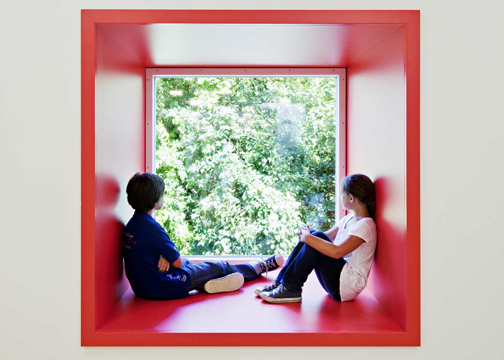
Considering Children as Design Consumers
When it comes to inclusive or universal design we often immediately begin to consider seniors, persons with physical or mental disabilities and those with vision or hearing impairments. The ADA has helped regulate fairness in building practices for these groups and building codes often address safety issues for everyone in the case of an emergency. However we often do not readily think of children as a part of inclusive design and there are few “requirements” beyond basic safety (height and spacing of stair railings and open treads, for example) that help designers consider children as a user group. A study by the Kaiser Family Foundation lists that 26% of the world’s population is under the age of 15 – a little under a third of the world is youth – and while children might not be direct consumers of designed products and spaces, they inevitably use them (with or without adults).
The 7 principles of Universal Design are:
1. Equitable use, 2. Flexibility in use, 3. Simple and intuitive, 4. Perceptible information, 5. Tolerance for error, 6. Low physical effort, 7. Size and space for approach and use.
While these are great considerations that should be applied to products and spaces used by the public, designers using these principles also need to realize that the needs for “Perceptible Information” for a senior or a person in a wheelchair or a child may be relatively varied. For example, the desired signage mounting height, use of an image vs. text, or even the color or font of a sign may be very different when considering even just three users of different ages.
Of course there are specific spaces designed for kids (nurseries, daycares, primary schools, pediatric offices, etc), and there is research supporting the way they are designed, but how can we better consider children (and children with disabilities) when we design for the general public or even in home design? Can we make things safer, easier to use and understand for everyone who may use the space, including children?
Here are a few great example of spaces and furniture that had kids in mind when they were being designed and which we can look to for inspiration when considering children as a part of inclusive design:

(image from dezeen.com)
1. Restaurant Praq: A “grown-up” restaurant space designed by the Dutch studio Tjep. which is also fun for kids: the concept was that the space would be both welcoming to parents and children, without looking like a playground. Full of bright color, warm woods and playful built-in elements the space is dynamic, fun, and comfortable without being overwhelming or silly. More here on dezeen.
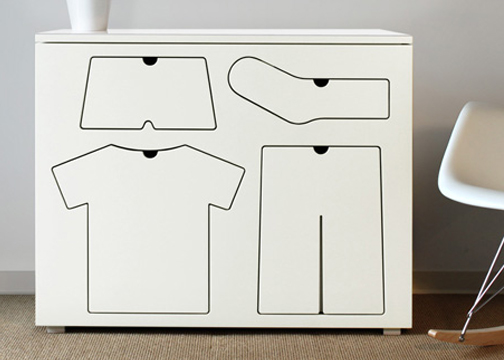
(image from dezeen.com)
2. A dresser created by Seattle product designer Peter Bristol which helps kids learn to sort and organize their clothes by using graphics (instead of the standard, all-the-same drawers) to indicate where certain items should go – the design is fun and clever and we are sure there are a few adults who the design would benefit as well.
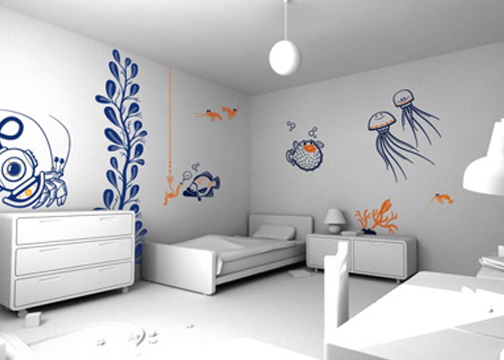
(image from dezeen.com)
3. Vinyl wall decorations, which have become popular in the last couple years as a way to personalize your space without damaging your walls or taking the time to paint, are a great idea for children’s spaces (especially since as the child gets older or changes their style, these can easily be changed out). E-glue is a company that makes children inspired vinyl wall art and even has a service called artiKIDS where a child can submit their own art and have it turned into large-format vinyl decals.
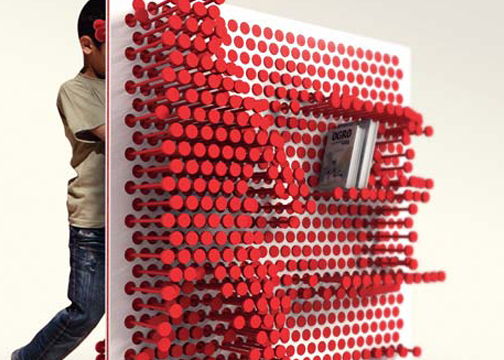
(image from dezeen.com)
4. Pin Pres is a kid’s room shelf (there is a similar, more adult retail version here), where there are rods in the furniture unit that slide in and out so toys, books and other kid-things can be stored in a fun and interactive way.
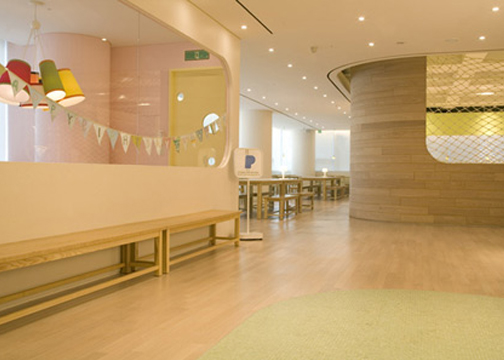
(image from dezeen.com)
5. Taking a different approach than the one designed by Tjep, this restaurant concept caters to kids first, but also makes the space adult enough for the parents – the design is sleek and simple, with pops of color in a landscape of woods and white. The “Kids Café Piccolo” is meant to be a fun space as well as a learning experience for the children using it.


